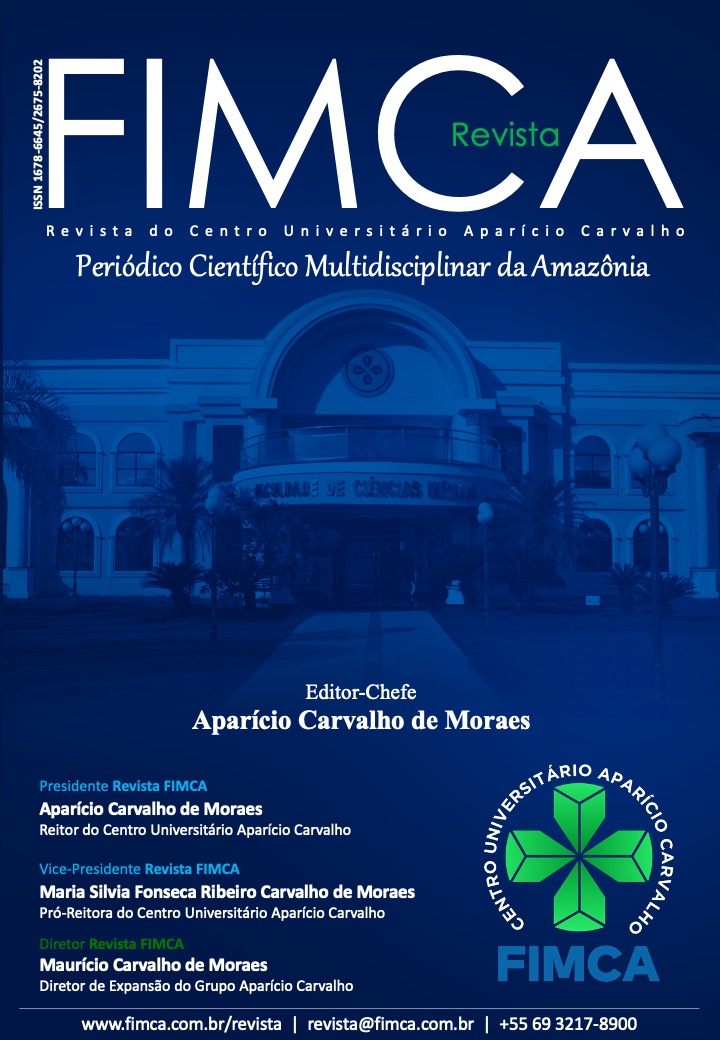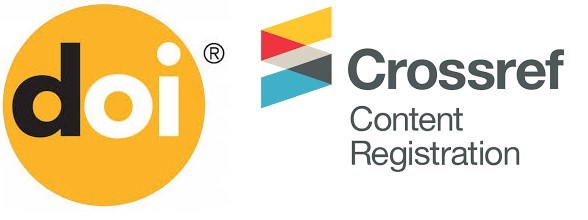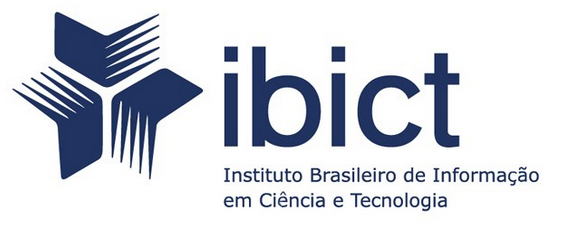Um NEUROBIOLOGIA DOS TRANSTORNOS PSIQUIÁTRICOS: MAPEANDO AS BASES NEURAIS E IMPLICAÇÕES TERAPÊUTICAS DO TDAH E TAB
NEUROBIOLOGY OF PSYCHIATRIC DISORDERS: MAPPING THE NEURAL BASES AND THERAPEUTIC IMPLICATIONS OF ADHD AND BD
DOI:
https://doi.org/10.37157/fimca.v12i1.1122Palavras-chave:
neurobiologia, TDAH, Transtorno Bipolar, Trerapias farmacolóficas, PsicoterapiaResumo
Este estudo aborda a neurobiologia do Transtorno de Déficit de Atenção e Hiperatividade (TDAH) e do Transtorno Afetivo Bipolar (TAB), mapeando suas bases neurais e implicações terapêuticas. Objetivo geral: Compreender os mecanismos neurobiológicos subjacentes ao TDAH e ao TAB e suas implicações para o desenvolvimento de intervenções terapêuticas eficazes. Objetivos específicos: Identificar alterações neuroquímicas e anatômicas associadas a esses transtornos, avaliar a influência de fatores genéticos e ambientais e analisar abordagens terapêuticas farmacológicas e psicossociais. Materiais e Métodos: Trata-se de uma pesquisa bibliográfica, de natureza qualitativa, com abordagem exploratória e descritiva, utilizando fontes de dados de artigos científicos revisados por pares, obtidos em bases como PubMed, PsycINFO e Web of Science, além de manuais diagnósticos (DSM-5 e CID-10). Resultados esperados: Identificação de disfunções nos sistemas dopaminérgico e noradrenérgico no TDAH, com alterações no córtex pré-frontal, e desregulação monoaminérgica no TAB, com impacto na amígdala e córtex pré-frontal ventral. Espera-se que os achados reforcem a eficácia de psicoestimulantes (TDAH) e estabilizadores de humor (TAB), além de intervenções psicoterapêuticas como a Terapia Cognitivo-Comportamental. Considerações finais: A pesquisa destaca a necessidade de abordagens terapêuticas personalizadas, considerando a heterogeneidade neurobiológica e clínica desses transtornos, contribuindo para avanços no diagnóstico e tratamento.
This study investigates the neurobiology of Attention Deficit Hyperactivity Disorder (ADHD) and Bipolar Affective Disorder (BAD), mapping their neural bases and therapeutic implications. General objective: To understand the neurobiological mechanisms underlying ADHD and BAD and their implications for developing effective therapeutic interventions. Specific objectives: To identify neurochemical and anatomical alterations associated with these disorders, assess the influence of genetic and environmental factors, and analyze pharmacological and psychosocial therapeutic approaches. Materials and Methods: This is a qualitative, exploratory, and descriptive bibliographic research, using data from peer-reviewed scientific articles sourced from databases such as PubMed, PsycINFO, and Web of Science, in addition to diagnostic manuals (DSM-5 and ICD-10). Expected results: Identification of dysfunctions in the dopaminergic and noradrenergic systems in ADHD, with alterations in the prefrontal cortex, and monoaminergic dysregulation in BAD, impacting the amygdala and ventral prefrontal cortex. The findings are expected to support the efficacy of psychostimulants (ADHD) and mood stabilizers (BAD), alongside psychotherapeutic interventions such as Cognitive Behavioral Therapy. Final considerations: The research underscores the need for personalized therapeutic approaches, considering the neurobiological and clinical heterogeneity of these disorders, contributing to advances in diagnosis and treatment.
Referências
ABDELNOUR, E.; JANSEN, M. O.; GOLD, J. A. ADHD diagnostic trends: increased recognition or overdiagnosis? Missouri Medicine, v. 119, n. 5, p. 467, 2022. Disponível em: https://www.ncbi.nlm.nih.gov/pmc/articles/PMC9481960/. Acesso em: 15 mai. 2025.
AL JOWF, Ghazi I.; AHMED, Ziyad T.; AN, Ning; REIJNDERS, Rick A.; AMBROSINO, Elena; RUTTEN, Bart P. F.; DE NIJS, Laurence; EIJSSEN, Lars M. T. A public health perspective of post-traumatic stress disorder. International journal of environmental research and public health, v. 19, n. 11, p. 6474, 2022. Disponível em: https://doi.org/10.3390/ijerph19116474. Acesso em: 17 mai. 2025.
ALMEIDA, D. F.; ROCHA, E. Intervenções de enfermagem a pacientes pediátricos portadores do transtorno de humor bipolar. REAL – Repositório Institucional, v. 1, n. 1, 2022. Disponível em: https://realacademico.com.br/revista/index.php/real/article/view/1213. Acesso em: 15 mai. 2025.
AMERICAN PSYCHIATRIC ASSOCIATION. Diagnostic and statistical manual of mental disorders: DSM-5. 5. ed. Arlington: American Psychiatric Publishing, 2013. Disponível em: https://doi.org/10.1176/appi.books.9780890425596. Acesso em: 13 mai. 2025.
AYANO, G.; DEMELASH, S.; GIZACHEW, Y.; TSEGAY, L.; ALATI, R. The global prevalence of attention deficit hyperactivity disorder in children and adolescents: An umbrella review of meta-analyses. Journal of Affective Disorders, Australia, v. 339, n. 1, p. 860–866, 15 out. 2023. Disponível em: https://doi.org/10.1016/j.jad.2023.01.029. Acesso em: 18 abr. 2025.
AZEVEDO, M. C. de A.; RODRIGUES, C. F. P.; COLARES, F. B.; DA CRUZ, T. T. A. Pharmacological treatment in ADHD patients with emphasis on the use of methylphenidate: Systematic review. Brazilian Journal of Development, Curitiba, v. 7, n. 11, p. 107876–107900, 2021. Disponível em: https://doi.org/10.34117/bjdv7n11-1183. Acesso em: 22 abr. 2025.
BANASCHEWSKI, T.; JOHNSON, M.; NAGY, P.; HERNÁNDEZ OTERO, I.; SOUTULLO, C. A.; YAN, B.; ZUDDAS, A.; COGHILL, D. R. Growth and puberty in a 2-year open-label study of lisdexamfetamine dimesylate in children and adolescents with attention-deficit/hyperactivity disorder. CNS Drugs, v. 32, n. 5, p. 455–467, 2018. Disponível em: https://doi.org/10.1007/s40263-018-0514-8. Acesso em: 02 mai. 2025.
BARION, G. B.; JESUS, G. S. de. Transtorno afetivo bipolar – revisão da literatura. Contribuciones a las Ciencias Sociales, v. 17, n. 12, 2023. Disponível em: https://doi.org/10.55905/revconv.17n.12-100. Acesso em: 06 jun. 2025.
BENCZIK, E. B. P.; CASELLA, E. B. Compreendendo o impacto do TDAH na dinâmica familiar e as possibilidades de intervenção. Revista Psicopedagogia,v. 32, n. 97, p. 93–103, 2015. Disponível em: https://pepsic.bvsalud.org/scielo.php?script=sci_arttext&pid=S0103-84862015 000100012. Acesso em: 23 abr. 2025.
BOSAIPO, N. B.; BORGES, V. F.; JURUENA, M. F. Transtorno bipolar: uma revisão dos aspectos conceituais e clínicos. Medicina (Ribeirão Preto), Ribeirão Preto, v. 50, n. 1, p. 72–84, 2017. Disponível em: https://doi.org/10.11606/issn.2176-7262.v50i1p72-84. Acesso em: 08 mai. 2025.
BRASIL. Ministério da Saúde. Secretaria de Vigilância Sanitária. Portaria nº 344, de 12 de maio de 1998. Aprova o regulamento técnico sobre substâncias e medicamentos sujeitos a controle especial. Diário Oficial da União: seção 1, Brasília, DF, 13 maio 1998. Disponível em: https://www.gov.br/anvisa/pt-br/assuntos/medicamentos/controlados/lista-substancias. Acesso em: 6 jun. 2025.
CAMPOS, A. R. de O,a; ALVES, E. M.; SILVA, J. L. da; AMÂNCIO, N. de F. G. Tratamentos farmacológicos e não medicamentosos para TDAH em crianças: uma revisão. Revista JRG de Estudos Acadêmicos, São Paulo, v. 8, n. 18, p. e181788, 2025. Disponível em: https://doi.org/10.55892/jrg.v8i18.1788. Acesso em: 06 jun. 2025.
CECIL, C. A. M.; NIGG, J. T. Epigenetics and ADHD: reflections on current knowledge, research priorities and translational potential. Molecular Diagnosis & Therapy, v. 26, n. 6, p. 581–606, 2022. Disponível em: https://doi.org/10.1007/s40291-022-00612-3. Acesso em: 26 mar. de 2025.
CHUNG, W.; JIANG, S. F.; PAKSARIAN, D.; NIKOLAIDIS, A.; CASTELLANOS, F. Xa.; MERIKANGAS, K.R.; MILHAM, M. P. Trends in the prevalence and incidence of attention-deficit/hyperactivity disorder among adults and children of different racial and ethnic groups. JAMA Network Open, v. 2, n. 11, p. e1914344, 1 nov. 2019. Disponível em: https://doi.org/10.1001/jamanetworkopen.2019.14344. Acesso em: 05 mai. 2025.
CORTESE, S.; ADAMO, N.; DEL GIOVANE, C.; MOHR-JENSEN, C.; HAYES, A.J.; CARUCCI, S. et al. Comparative efficacy and tolerability of medications for attention-deficit hyperactivity disorder in children, adolescents, and adults: a systematic review and network meta-analysis. The Lancet Psychiatry, v. 5, p. 727–738, 2018. Disponível em: https://doi.org/10.1016/S2215-0366(18)30269-4. Acesso em: 23 mar. 2025.
DEFAR, S.; ABRAHAM, Y.; RETA, Y.; DERIBE, B.; JISSO, M.; YEHEYIS, T.; KEBEDE, K. M.; BEYENE, B.; AYALEW, M. Health related quality of life among people with mental illness: The role of socio-clinical characteristics and level of functional disability. Frontiers in Public Health, Lausanne, v. 11, 2023. Disponível em: https://doi.org/10.3389/fpubh.2023.1134032. Acesso em: 23 de mar. de 2025.
DHAKAL, A.; BOBRIN, B. D. Cognitive deficits. 2020. Disponível em: https://www.ncbi.nlm.nih.gov/books/NBK559052/. Acesso em: 10 mai. 2024.
ENES, C. de L.; DE FREITAS, P. H. B.; DUARTE, S. J. H.; CLEMENTINO, M. T. R.; PACHECO, A. E.; MACHADO, R. M. Predição da adesão ao tratamento e qualidade de vida de pacientes com transtorno bipolar. Revista de Enfermagem do Centro Oeste Mineiro, v. 10, n. 8, 2020. Disponível em: https://doi.org/10.19175/recom.v10i0.3489. Acesso em: 6 jun. 2025.
ETAIN, B.; MATHIEU, F.; HENRY, C.; RAUST, A.; ROY, I.; GERMAIN, A.; LEBOYER, M.; BELLIVIER, F. Preferential association between childhood emotional abuse and bipolar disorder. Journal of Traumatic Stress, v. 23, n. 3, p. 376–383, 2010. Disponível em: https://doi.org/10.1002/jts.20532. Acesso em: 6 jun. 2025.
FARAONE, S.V.; BANASCHEWSKI, T.; COGHILL, D.; ZHENG, Y; BIEDERMAN, J.; BELLGROVE, M. A. et al. The world federation of ADHD international consensus statement: 208 evidence-based conclusions about the disorder. Neuroscience & Biobehavioral Reviews, v. 128, p. 789-818, 2021. Disponível em: https://doi.org/10.1016/j.neubiorev.2021.01.022. Acesso em: 6 jun. 2025.
FOUNTOULAKIS, K. N.; TOHEN, M.; ZARATE, C. A. Lithium treatment of Bipolar disorder in adults: A systematic review of randomized trials and meta-analyses. Eur Neuropsychopharmacol, v. 54, p. 100-115, 2022. Disponível em: 10.1016/j.euroneuro.2021.10.003. Acesso em: 6 jun. 2025.
FRANK-BRIGGS, A. I. Attention deficit hyperactivity disorder (ADHD). Journal of Pediatric Neurology, v. 9, n. 03, p. 291-298, 2011. Disponível em: https://doi.org/10.3233/JPN-2011-0494. Acesso em: 6 jun. 2025.
GAUTAM, S.; JAIN, A.; CHAUDHARY, J.; GAUTAM, M.; GAUR, M.; GROVER, S. Concept of mental health and mental well-being, its determinants and coping strategies. Indian Journal of Psychiatry, v. 66, supl. 2, p. S231–S244, 2024. Disponível em: https://doi.org/10.4103/indianjpsychiatry.indianjpsychiatry_707_23. Acesso em: 6 jun. 2025.
GNANAVEL, S.; SHARMA, P.; KAUSHAL, P.; HUSSAIN, S. Attention deficit hyperactivity disorder and comorbidity: A review of literature. World Journal of Clinical Cases, Pleasanton, v. 7, n. 17, p. 2420–2426, 2019. Disponível em: https://doi.org/10.12998/wjcc.v7.i17.2420. Acesso em: 6 jun. 2025
GRASSI-OLIVEIRA, R.; BRIEZTKE, E.; TEIXEIRA, A.; PEZZI, J. C.; ZANINI, M.; LOPES, R. P.; BAUER, M. E. Níveis periféricos de quimiocina em mulheres com depressão maior recorrente com ideação suicida. Revista Brasileira de Psiquiatria, São Paulo, v. 34, n. 1, p. 71–75, 2012. Disponível em: https://doi.org/10.1590/S1516-44462012000100013. Acesso em: 6 jun. 2025.
JAIN, A.; MITRA, P. Bipolar disorder. In: StatPearls [Internet]. Treasure Island (FL): StatPearls Publishing, 2023. Disponível em: https://www.ncbi.nlm.nih.gov/books/NBK558998/. Acesso em: 03 abr. 2024.
JOKELA, M. Why is cognitive ability associated with psychological distress and wellbeing? Exploring psychological, biological, and social mechanisms. Personality and Individual Differences, v. 192, p. 111592, 2022. Disponível em: https://doi.org/10.1016/j.paid.2022.111592. Acesso em: 6 jun. 2025.
KESSI, M.; DUAN, H.; XIONG, J.; CHEN, B.; HE, F.; YANG, L.; et al. Attention-deficit/hyperactive disorder updates. Frontiers in Molecular Neuroscience, v. 15, p. 925049, 2022. Disponível em: https://doi.org/10.3389/fnmol.2022.925049. Acesso em: 6 jun. 2025.
KIESEPPÄ, T.; PARTONEN, T.; HAUKKA, J.; KAPRIO, J.; LÖNNQVIST, J. High concordance of bipolar I disorder in a nationwide sample of twins. The American Journal of Psychiatry, v. 161, n. 10, p. 1814–1821, 2004. Disponível em: https://doi.org/10.1176/appi.ajp.161.10.1814. Acesso em: 6 jun. 2025.
LEE, J. H.; SADANA, R. (eds.). Improving equity in health by addressing social determinants. Copenhagen: World Health Organization, Regional Office for Europe, 2011. Disponível em: https://apps.who.int/iris/handle/10665/44793. Acesso em: 14 abr. 2024.
LORETTU, L.; CARPITA, B.; NIVOLI, A.; MILIA, P.; DE IORIO, G.; CREMONE, I. M.; DELL'OSSO, L. Lithium use during pregnancy in a patient with bipolar disorder and multiple sclerosis. Clinical neuropharmacology, v. 43, n. 5, p. 158-161, 2020. Disponível em: https://doi.org/10.1097/WNF.0000000000000407. Acesso em: 6 jun. 2025.
MADIREDDY, S.; MADIREDDY, S. Therapeutic Interventions to Mitigate Mitochondrial Dysfunction and Oxidative Stress-Induced Damage in Patients with Bipolar Disorder. Int J Mol Sci, v. 23, n. 3, 1844, 2022. Disponível em: https://doi.org/10.3390/ijms23031844. Acesso em: 10 mar. 2025.
MAES, M. H. J.; STOYANOV, D. False dogmas in mood disorders research: Towards a nomothetic network approach. World Journal of Psychiatry, v. 12, n. 5, p. 651, 2022. Disponível em: https://doi.org/10.5498/wjp.v12.i5.651. Acesso em: 15 mar. 2025.
MATTHIJSSEN, A. F.M.; DIETRICH, A.; BIERENS, M.; DETERS, R. K.; VAN DE LOO-NEUS, G. H. H.; VAN DEN HOOFDAKKER, B. J.; BUITELAAR, J. K.; HOEKSTRA, P. J. Continued Benefits of Methylphenidate in ADHD After 2 Years in Clinical Practice: A Randomized Placebo-Controlled Discontinuation Study. The American Journal of Psychiatry, v. 176, n. 9, p. 754-762, 2019. Disponível em: 10.1176/appi.ajp.2019. Acesso em: 16 mar. 2025.
MCINTYRE, R. S.; ALDA, M.; BALDESSARINI, R. J.; BAUER, M.; BERK, M.; CORRELL, C. U.; et al. The clinical characterization of the adult patient with bipolar disorder aimed at personalization of management. World Psychiatry, v. 21, n. 3, p. 364–387, 2022. Disponível em: https://doi.org/10.1002/wps.20997. Acesso em: 15 mar. 2025.
MERIKANGAS, K. R.; HE, J. P.; BRODY, D.; FISHER, P. W.; BOURDON, K.; KORETZ, D. S. Prevalence and treatment of mental disorders among US children in the 2001–2004 NHANES. Pediatrics, v. 125, n. 1, p. 75–81, 2010. Disponível em: https://doi.org/10.1542/peds.2008-2598. Acesso em: 10 mar. 2025.
MIKLOWITZ, D. J.; EFTHIMIOU, O.; FURUKAWA, T. A.; SCOTT, J.; McLAREN, R.; GEDDES, J. R.; CIPRIANI, A. Adjunctive Psychotherapy for Bipolar Disorder: A Systematic Review and Component Network Meta-analysis. JAMA Psychiatry, v. 78, n. 2, p. 141-150, 2021. Disponível em: https://doi.org/10.1001/jamapsychiatry.2020.2993. Acesso em: 15 mar. 2025.
MISSAWA, D. D. A.; ROSSETTI, C. B. Psicólogos e TDAH: possíveis caminhos para diagnóstico e tratamento. Constr. Psicopedag, v. 22, n. 23, pp. 81-90, 2014. Disponível em: https://pepsic.bvsalud.org/pdf/cp/v22n23/07.pdf. Acesso em: 6 jun. 2025.
PANTOJA, A. F.; LEITE, J. P.; DE PAULA, L. C.; SALGE, C. B. F.; MATTOS, T. B.; REIS, G. A.; et al. Neurociência e TDAH: Explorando Conexões Cerebrais e Avanços em Intervenções Terapêuticas. Brazilian Journal of Implantology and Health Sciences, v. 6, n. 1, p. 471-490, 2024. Disponível em: https://doi.org/10.36557/2674-8169.2023v6n1p471-490. Acesso em: 10 mar. 2025.
POLANCZYK, G. V.; SALUM, G. A.; SUGAYA, L. S.; CAYE, A.; ROHDE, L.A. Annual research review: A meta-analysis of the worldwide prevalence of mental disorders in children and adolescents. Journal of Child Psychology and Psychiatry, v. 56, n. 3, p. 345–365, 2015. Disponível em: https://doi.org/10.1111/jcpp.12381. Acesso em 22 de abril de 2025.
PORTO, E. R. S. N.; OLIVEIRA, C. R. de M.; NEVES, T. R. de C.; MENDONÇA, M. A. Uma abordagem geral do transtorno bipolar. Revista Eletrônica Acervo Médico, v. 23, n. 5, e12829, 2023. Disponível em: https://doi.org/10.25248/reamed.e12829.2023. Acesso em: 25 abr. 2025.
RODRIGUES, R.; LAI, M.-C.; BESWICK, A.; GORMAN, D.A.; ANAGNOSTOU, E.; SZATMARI, P.; ANDERSON, K. K.; AMEIS, S.H. Practitioner review: Pharmacological treatment of attention-deficit/hyperactivity disorder symptoms in children and youth with autism spectrum disorder: a systematic review and meta-analysis. Journal of Child Psychology and Psychiatry, v. 62, n. 6, p. 680–700, 2021. Disponível em: https://doi.org/10.1111/jcpp.13305. Acesso em: 02 mai. 2025.
SADOCK, B. J.; SADOCK, V. A.; RUIZ, P. Compêndio de psiquiatria: ciência do comportamento e psiquiatria clínica. 11. ed. Porto Alegre: Artmed, 2017.
SHAW, P.; ECKSTRAND, K.; SHARP, W.; BLUMENTHAL, J.; LERCH, J. P.; GREENSTEIN, D.; et al. Attention-deficit/hyperactivity disorder is characterized by a delay in cortical maturation. PNAS, v. 104, n. 49, p. 19649–19654, 2007. Disponível em: https://doi.org/10.1073/pnas.0707741104. Acesso em: 22 abr. 2025.
STRAKOWSKI, S. M.; ADLER, C. M.; ALMEIDA, J.; ALTSHULER, L. L.; BLUMBERG, H. P.; CHANG, K. D.; et al. The functional neuroanatomy of bipolar disorder: a consensus model. Bipolar Disorders, v. 14, n. 4, p. 313–325, jun. 2012. Disponível em: https://doi.org/10.1111/j.1399-5618.2012.01022.x. Acesso em 13 de maio de 2025.
SONG, P.; ZHA, M.; YANG, Q.; ZHANG, Y.; LI, X.; RUDAN, I. The prevalence of adult attention-deficit hyperactivity disorder: A global systematic review and meta-analysis. Journal of Global Health, v. 11, p. 04009, 2021. Disponível em: https://doi.org/10.7189/jogh.11.04009. Acesso em: 02 abr. 2025.
SOUZA, F. G. de M; CALIL, H. M.; TAMAI, S. Diagnóstico e tratamento do transtorno bipolar. Publicações ABP, v. 7, 21 jul. 2020. Disponível em: https://abp.org.br/publicacoes/diretrizes/07-transtorno-bipolar.pdf. Acesso em: 15 mai. 2025.
THAPAR, A.; COLLISHAW, S.; PINE, D. S.; THAPAR, A. K. Depression in adolescence. The Lancet, v. 379, n. 9820, p. 1056–1067, 2012. Disponível em: https://doi.org/10.1016/S0140-6736(11)60871-4. Acesso em: 02 mai. 2025.
WAXMONSKY, J.; PELHAM, W. E.; GNAGY, E.; CUMMINGS, M. R.; O'CONNOR, B.; et al. The efficacy and tolerability of methylphenidate and behavior modification in children with attention-deficit/hyperactivity disorder and severe mood dysregulation. Journal of Child and Adolescent Psychopharmacology, v. 18, n. 6, p. 573–588, 2008. Disponível em: https://doi.org/10.1089/cap.2008.065. Acesso em: 6 jun. 2025.
WELLS, T. S.; MILLER, S. C.; ADLER, A. B.; ENGEL, C. C.; SMITH, T. C.; FAIRBANK, John A. Mental health impact of the Iraq and Afghanistan conflicts: a review of US research, service provision, and programmatic responses. International Review of Psychiatry, v. 23, n. 2, p. 144–152, abr. 2011. Disponível em: https://doi.org/10.3109/09540261.2011.558833. Acesso em: 6 jun. 2025.
WOLRAICH, M. L.; CHAN, E.; FROEHLICH, T.; LYNCH, R. L.; BAX, A.; REDWINE, S. T.; IHYEMBE, D.; HAGAN, J. F. ADHD diagnosis and treatment guidelines: a historical perspective. Pediatrics, v. 144, n. 4, e20191682, out. 2019. Disponível em: https://doi.org/10.1542/peds.2019-1682. Acesso em: 03 mai. 2025.
WU, K-G; CHEN, S-J; HU, Y-N; MEI, S-F; CHEN, W-C; HUANG, X-E; et al. The relationship between physical activity and depression among community-dwelling adults in Wuhan, China. Frontiers in Psychiatry, Lausanne, v. 14, 25 abr. 2023. Disponível em: https://doi.org/10.3389/fpsyt.2023.1179417. Acesso em: 6 jun. 2025.
YATHAM, L. N.; KENNEDY, S. H.; PARIKH, S.V.; SCHAFFER, A.; BOND, D. J.; FREY, B. N.; et al. Canadian Network for Mood and Anxiety Treatments (CANMAT) and International Society for Bipolar Disorders (ISBD) 2018 guidelines for the management of patients with bipolar disorder. Bipolar disorders, v. 20, n. 2, p. 97-170, 2018. Disponível em: https://doi.org/10.1111/bdi.12609. Acesso em 23 de março de 2025.
YOUNG, S.; ASHERSON, P.; LLOYD, T.; ABSOUD, M.; ARIF, M.; COLLEY, W. A.; et al. Failure of healthcare provision for attention-deficit/hyperactivity disorder in the United Kingdom: a consensus statement. Frontiers in Psychiatry, Lausanne, v. 12, 19 2021. Disponível em: https://doi.org/10.3389/fpsyt.2021.649399. Acesso em: 2 mai. 2025.
Publicado
Como Citar
Edição
Seção
Copyright (c) 2025 REVISTA FIMCA

Este trabalho está licensiado sob uma licença Creative Commons Attribution 4.0 International License.
A Revista FIMCA disponibiliza seus artigos e resumos para livre acesso de forma permanente e gratuita nos termos da Creative Commons Attribution License, permitindo que a sociedade possa compartilhar (copiar e redistribuir o material em qualquer suporte ou formato para qualquer fim, mesmo que comercial) e adaptar (remixar, transformar, e criar a partir do material para qualquer fim, mesmo que comercial), desde que seja dado o devido crédito apropriado, provendo um link para a licença e indicar se mudanças foram feitas.
Vale a pena ressaltar, que mesmo que o material seja transformado, modificado, ou der origem a outro material, este deve ser distribuido respeitando obrigatoriamente a citação do original nos termos da licença CC BY-AS 4.0 DEED.

















